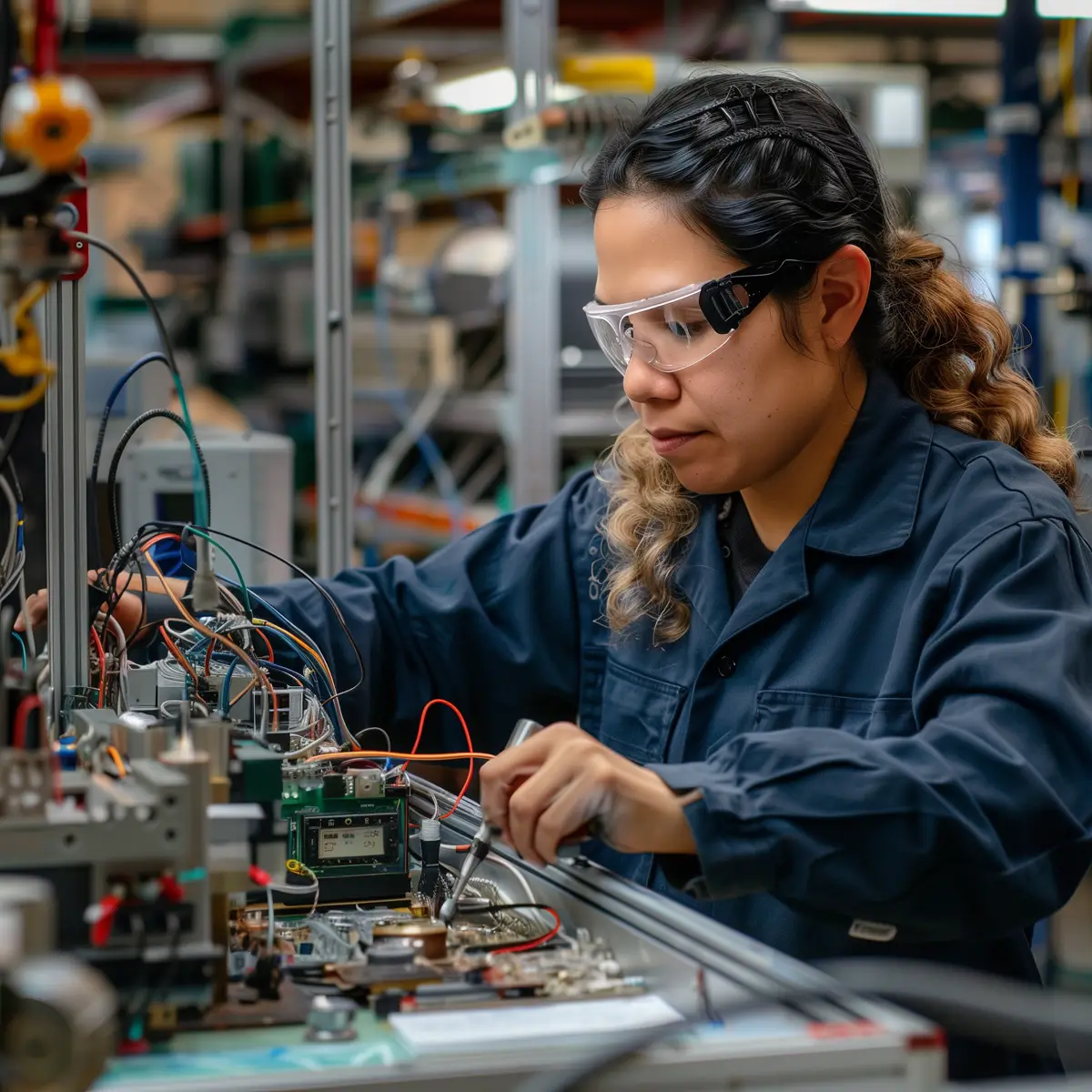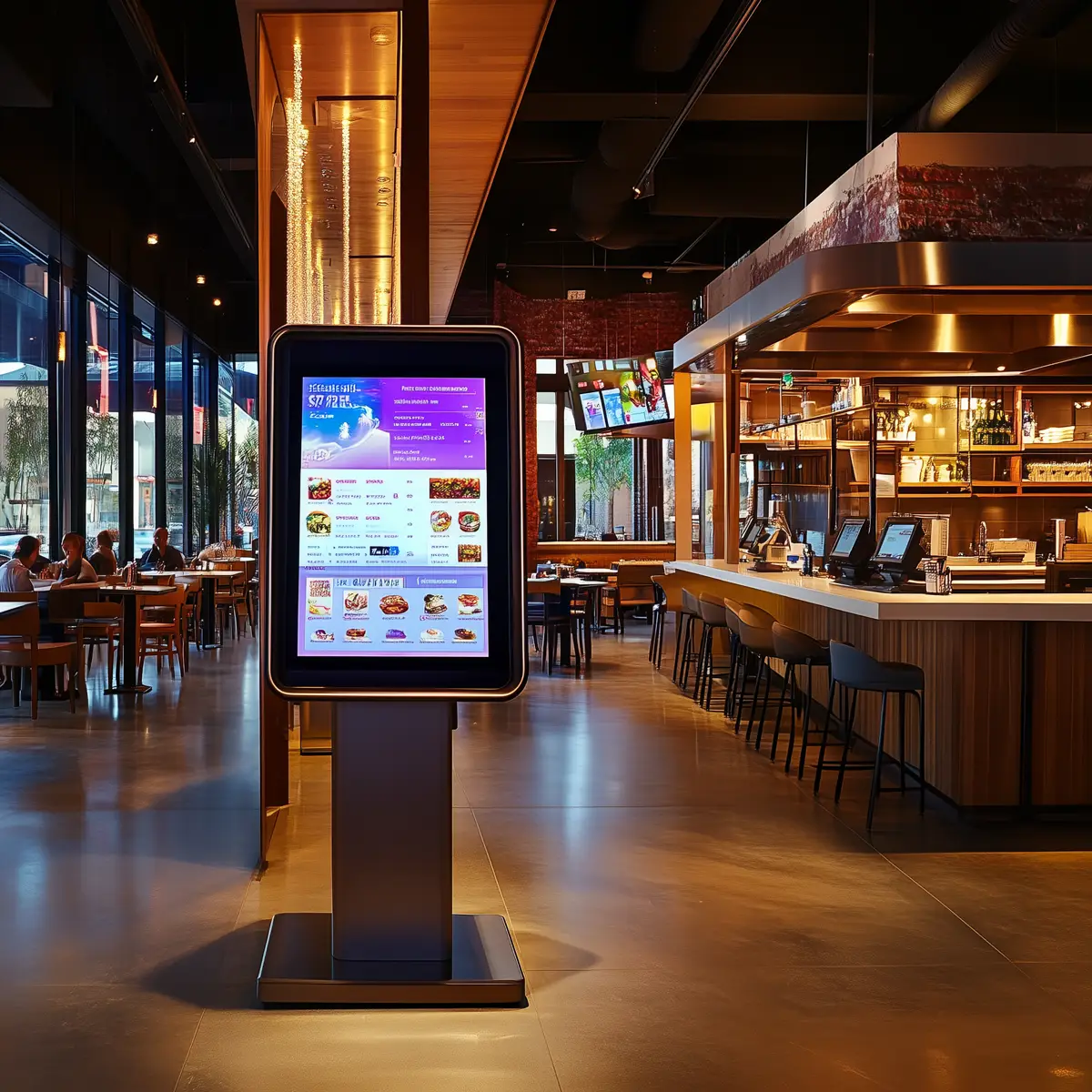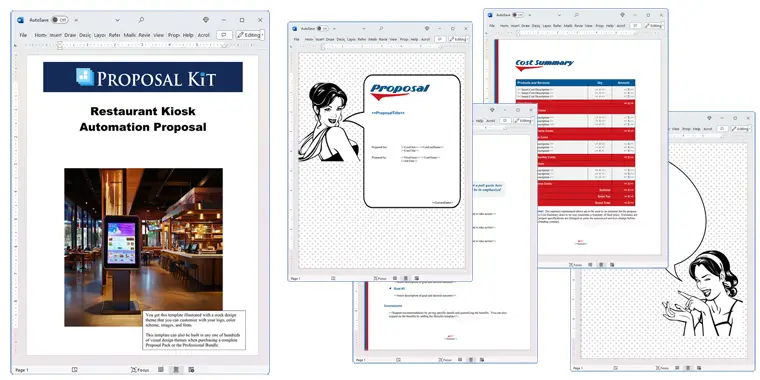How to write your Restaurant Kiosk Automation Proposal
We include this 20 page layout with every Proposal Pack. If you want this template to have a different visual design theme than the one illustrated here, purchase any Proposal Pack design and create this template using the purchased design theme. This template is included in every Proposal Pack. If you get a Proposal Pack or the Professional, you can also make any variation of this template with different chapters to suit your needs.
We typically include more chapters in the templates than most people will need to give everyone more variety in the chapters they may need. You can trim down a long template by removing pages you do not need or combining multiple chapter topics into one page.
 DOWNLOADABLE, ONE-TIME COST, NO SUBSCRIPTION FEES
DOWNLOADABLE, ONE-TIME COST, NO SUBSCRIPTION FEES![]() View Restaurant Kiosk Automation Sample Proposal
View Restaurant Kiosk Automation Sample Proposal
This sample proposal is based on the same layout as this template and is included in every Proposal Pack. The visual design of the templates will match whichever Proposal Pack design you purchase. To get this template in a different design theme than shown in the sample, purchase any other Proposal Pack design theme and this template will be included.
You can create an editable Word version of this sample in any design theme of your choice including branded to your logo.
You can also create countless variations of this document to suit your needs using the included library of 2200+ chapters if ordering a Proposal Pack or Professional.
 What Our Clients Say
What Our Clients SayAn excellent product, definitely worth the small investment. I spent over 10 years building proposals from scratch for the food service industry and although I had some success I was never entirely happy with the end result. I bought the Proposal Pack Wizard about 2 years ago I was finally able to produce great looking documents with the professional image that I needed. The response to the new format was excellent and I was able to win more business, even when competing with much larger competitors."
Related Article
Related Video
Related Templates
- Restaurant and Bar Funding Proposal
- Software Automation Proposal
- Equipment or Machinery Systems Upgrade Proposal
- Process Improvement Proposal
- Food Kiosk Equipment Grant Proposal
- Food Services Deli Proposal
- Buying a Vending Franchise Proposal
- Business Franchise Proposal Template
- Franchise Purchasing Proposal
- Franchise Selling Proposal
- Software and Hardware System Proposal
- Vending Machine Placement Proposal
What's the Best Way to Write Your Restaurant Kiosk Automation Proposal?
Proposal Kit offers a proven solution for writing restaurant automation proposals. With its comprehensive library of templates and software, Proposal Kit makes it easier to write professional proposals tailored to specific needs, including those for kiosk automation in fast food restaurants. These templates not only guide the structure and content of your proposal but also incorporate a line item quoting database system for accurate cost summaries, quotes, estimates, and budgets.
Do you need to write a proposal to automate a business with self-service kiosks? The Proposal Kit is designed for you.
What Types of Projects Are Restaurant Kiosk Automation Proposals Written For?
Restaurant automation proposals are created for a variety of situations within the food industry. Here are some examples of projects where these proposals are typically used:
- Implementing self-service kiosks in new restaurant locations
- Upgrading existing kiosks with advanced technology
- Integrating kiosks with mobile ordering applications
- Enhancing kiosk software for better user interface
- Expanding kiosk coverage to drive-thru lanes
- Installing contactless payment systems on kiosks
- Developing multilingual options for kiosks
- Adding accessibility features to kiosks
- Integrating loyalty program capabilities
- Connecting kiosks to kitchen display systems
- Introducing AI-driven recommendations on kiosks
- Improving security features of kiosks
- Conducting customer behavior analysis through kiosks
- Reducing wait times with optimized kiosk operations
- Offering personalized menu options on kiosks
- Testing new kiosk designs for efficiency
- Streamlining inventory management through kiosks
- Exploring energy-efficient kiosk solutions
- Enhancing kiosk connectivity and data sharing
- Conducting pilot projects for kiosk deployment
Chapters this template is built with
There is no one-size-fits-all premade template that covers every situation. This is why the Proposal Kit software is designed to create custom variations of templates that can be tailored to fit all situations. Here is a starting list of chapter templates that you can use as a framework. This list is just a small selection from the thousands of templates available in Proposal Kit's extensive content library, which you can customize to address all necessary topics:
Cover Letter
The cover letter sets the stage for your proposal by introducing your company and the purpose of your document. When used in a kiosk automation proposal, the cover letter can emphasize the urgency and necessity of adopting advanced technology to stay competitive in the fast-paced food service industry. By highlighting a few key benefits of kiosk implementation, such as improved order accuracy and faster service, the cover letter aims to captivate the reader's interest from the outset.
Executive Summary
The executive summary offers a concise overview of the entire proposal, summarizing its key topics. For restaurant kiosk automation, this section should clearly articulate the primary objectives, such as reducing operational costs and enhancing customer satisfaction. It should also provide a snapshot of the expected impact on business performance, making it easy for decision-makers to grasp the overall value proposition without delving into the full document.
Cost Summary
The cost summary outlines all financial topics related to implementing the kiosks, such as the budget for hardware, software, installation, and ongoing maintenance. This section is crucial for illustrating the financial implications, including potential savings derived from reduced labor costs and increased efficiency. By breaking down expenses and highlighting the projected return on investment, the cost summary provides transparency and reassures stakeholders of the proposal's financial viability.
Modernization
Modernization covers how kiosk automation will update current processes, showcasing the technological advancements that will enhance the restaurant's operations. This section could detail the specific upgrades, such as the integration of cloud-based management systems or the use of AI to recommend menu items. By aligning with industry trends and demonstrating how these innovations will modernize the restaurant's offerings, this chapter supports the case for technology investment.
Advantages
This section highlights the advantages of implementing the kiosk system, such as improved order processing, reduced wait times, and enhanced service personalization. By presenting data or case studies from similar successful implementations, this chapter strengthens the argument for adopting kiosks. It conveys how these advantages will translate into tangible business outcomes, such as higher customer satisfaction and loyalty.
Automation
Automation focuses on the processes that will be streamlined through kiosks, such as order taking, payment processing, and inventory management. This section should explain how automation will optimize workforce allocation, allowing staff to focus on higher-value tasks like customer service. By detailing the specific operations that will benefit from automation, this chapter highlights the efficiencies gained and the competitive edge provided by the technology.
Training
Training outlines the programs necessary to equip staff with the skills to operate the new kiosk systems. This section should detail the training schedules, methodologies, and resources required, such as instructional materials or hands-on workshops. By ensuring that the workforce is prepared for the transition, the training chapter emphasizes the proposal's commitment to a smooth and effective implementation.
Staffing
This section examines the impact of kiosks on staffing requirements, potentially shifting roles from order-taking to customer engagement. It might include plans for reassigning or retraining existing employees, or outline the need for new hires to manage and maintain the kiosks. By addressing the human resource implications, this chapter demonstrates foresight and an approach to workforce management.
Testing
Testing describes the protocols established to ensure kiosks function correctly before full deployment. This section should outline the testing phases, criteria for success, and troubleshooting procedures. By detailing how the reliability and performance of kiosks will be validated, the testing chapter assures stakeholders of a thorough approach to mitigating risks and ensuring quality.
Equipment
The equipment section provides a detailed description of the hardware and technology involved in the kiosk system, listing specifications, models, and quantities needed. This chapter is important for illustrating the scope of the project, including any necessary infrastructure upgrades, and provides a comprehensive view of the technical investments required.
System Requirements
System requirements outline the technical specifications necessary for the kiosks to function as intended, covering software, hardware, network, and security needs. By articulating these requirements, this section ensures that all technical topics are addressed, reducing the likelihood of future compatibility issues and safeguarding the investment.
Cost/Benefit Analysis
This analysis compares the costs involved with the benefits gained from implementing the kiosks. It provides a detailed examination of the financial justification for the project, illustrating how the long-term benefits outweigh the initial and ongoing costs. By quantifying both costs and benefits, this chapter offers an argument for the investment.
Cost Savings
Cost savings illustrate projected reductions in operational expenses due to automation, such as labor costs and order errors. This section quantifies these savings and presents them in context with the initial investment, providing a clear view of the financial efficiencies that kiosks can deliver over time.
Case Study
A case study presents a real-world example of similar projects that have been successfully implemented, serving as evidence of feasibility and effectiveness. By showcasing tangible results from comparable situations, this chapter builds credibility and reinforces confidence in the proposed solution.
Reliability
Reliability assesses the dependability of the kiosk system, including performance metrics, uptime guarantees, and support procedures. By ensuring consistent operation, this section addresses any concerns about the technology's stability and longevity, providing peace of mind to stakeholders.
Customer Experience
Customer experience explores how kiosks will enhance customer interactions, focusing on usability and satisfaction. This section should detail how the kiosks will offer personalized services, streamline ordering processes, and reduce wait times, ultimately leading to a more enjoyable dining experience.
Workforce
The workforce section discusses the implications for the restaurant's staff, addressing changes in roles and responsibilities. By outlining strategies for maximizing employee engagement with the new technology, this chapter emphasizes the proposal's holistic approach to integrating kiosks into the restaurant's existing operations.
Use cases for this template
Navigating Technological Overhaul at Fast Food Chain
The Challenge
FastBite Express, a fast food chain, found itself struggling with outdated ordering systems. This inefficiency led to long lines, frustrated customers, and declining sales. Maria, the project manager, was tasked with spearheading a technological overhaul. Her mission was to introduce self-service kiosks to streamline operations and enhance customer satisfaction. However, with limited experience in writing such proposals, she needed a clear plan that management would endorse.
The Solution
Maria turned to Proposal Kit, discovering an invaluable resource in its library of customizable templates. The kiosk automation proposal template provided her with a structured approach to present her case. It allowed her to highlight the anticipated cost savings, efficiency improvements, and the enhanced customer experience that kiosks would bring. The comprehensive nature of the templates gave Maria the confidence to articulate the project's value.
The Implementation
Equipped with a well-written proposal, Maria presented her plan to FastBite Express's management team. The Proposal Kit templates guided her through each step, from outlining equipment needs to scheduling staff training. She demonstrated how the kiosks would integrate with existing systems and provided a phased rollout plan to ensure minimal disruption.
The Outcome
The implementation of the kiosks was a resounding success. Customer wait times were significantly reduced, and order accuracy improved, leading to an upsurge in customer satisfaction and repeat business. Maria's initiative, supported by a well-structured proposal, not only resolved the technological challenges but solidified her reputation as a capable and forward-thinking leader within the company.
Meeting Tight Deadlines at a Franchise Chain
The Challenge
At QuickServe Innovations, a well-known franchise chain, John found himself under pressure. Tasked with writing a proposal to automate customer services via kiosks, he faced a deadline with little prior experience in proposal writing. The stakes were high, as the proposal's success could lead to significant improvements in operational efficiency and customer service.
The Solution
John discovered Proposal Kit, which became his solution. The resource offered a wide range of templates and tools that simplified the proposal-writing process. By incorporating an AI writing assistant, John efficiently generated content for each section of the proposal. He used the AI to analyze QuickServe's website, extracting relevant information and insights that enriched the proposal's content.
The Implementation
Using Proposal Kit's extensive library, John tailored the proposal to meet QuickServe's specific requirements. He detailed the anticipated improvements in customer service and operational efficiency. The AI-supported content ensured accuracy and coherence, enhancing the proposal's professionalism and appeal.
The Outcome
The proposal was submitted on time and was met with enthusiasm by QuickServe's management. The comprehensive and well-articulated presentation convinced them to proceed with the kiosk implementation. John's ability to meet the tight deadline with a high-quality proposal demonstrated his adaptability and resourcefulness, earning him commendation from his superiors.
Partnering with Non-Profits for Technological Advancement
The Challenge
Emily, the director at FreshStart Kitchens, a non-profit organization, faced the challenge of writing a Request for Proposal (RFP) to attract vendors for a kiosk automation project. The goal was to enhance the non-profit's capabilities in serving their community efficiently. However, Emily knew that the RFP needed to be detailed and comprehensive to attract the right partners.
The Solution
Emily turned to Proposal Kit for assistance in structuring the RFP. The templates provided her with a robust framework that covered all necessary topics, from technical specifications to cost analysis and implementation plans. By incorporating case studies and reliability data, she was able to substantiate the potential benefits and feasibility of the kiosk project.
The Implementation
With Proposal Kit, Emily created an RFP that clearly communicated FreshStart Kitchens' needs and expectations. The inclusion of detailed sections on system requirements and implementation plans ensured that prospective vendors understood the project scope and objectives.
The Outcome
The RFP attracted a variety of competitive bids from qualified vendors. Emily's thorough and well-structured document facilitated the selection of a technology provider who delivered the project on time and within budget. As a result, FreshStart Kitchens enhanced their operational efficiency and service delivery, significantly benefiting their community programs while reinforcing their commitment to technological advancement.
Conclusions and Recommendations
In conclusion, writing a kiosk automation proposal can be greatly simplified with the use of Proposal Kit's template library and software. The structured approach and customizable templates help individuals and businesses clearly communicate their project needs, financial details, and expected outcomes. By using Proposal Kit, you can confidently tackle the challenges of proposal writing, ensuring you present a case to decision-makers.
Also Known As
This template may also be referred to in different ways or be used in more specialized situations, such as:
- Self-Service Kiosk Proposal
- Fast Food Kiosk Plan
- Franchise Kiosk Automation
- Kiosk Implementation Proposal
- Automated Ordering System Proposal
- Quick Service Kiosk Proposal
- Restaurant Technology Upgrade Plan
- Kiosk Deployment Strategy
- Customer Self-Service Proposal
- Kiosk Integration Proposal
Abstract
 In the restaurant industry, kiosk automation has emerged as a solution for enhancing both operational efficiency and customer satisfaction. Restaurant owners are increasingly turning to automated systems to streamline processes, reduce personnel costs, and deliver a pleasant dining experience to their clientele. Through the implementation of drive-up kiosks and tableside devices, restaurants can achieve significant cost savings in the long run by minimizing staff costs while ensuring a seamless ordering and payment process. Restaurant clients can now pay securely, receive special offers, and enjoy personalized service, all orchestrated from a central hub that sends orders directly to the kitchen staff for swift food preparation and drink service.
In the restaurant industry, kiosk automation has emerged as a solution for enhancing both operational efficiency and customer satisfaction. Restaurant owners are increasingly turning to automated systems to streamline processes, reduce personnel costs, and deliver a pleasant dining experience to their clientele. Through the implementation of drive-up kiosks and tableside devices, restaurants can achieve significant cost savings in the long run by minimizing staff costs while ensuring a seamless ordering and payment process. Restaurant clients can now pay securely, receive special offers, and enjoy personalized service, all orchestrated from a central hub that sends orders directly to the kitchen staff for swift food preparation and drink service.
Proposal Kit provides a comprehensive toolkit that assists in creating detailed kiosk automation proposals, catering to various project types, from deploying drive-up windows for occasional customers to integrating AI-driven recommendations. By using Proposal Kit's extensive library of customizable templates and automated line-item quoting, restaurant owners can highlight the advantages of kiosk systems, such as speed and accuracy in order processing. This structured approach not only notes the financial efficiencies but also addresses system requirements and modernization needs, ensuring a smooth transition to advanced technology. The proposal may also cover training and testing protocols to prepare staff for new roles, further supporting the following goals of technological advancement and improved consumer engagement in the competitive restaurant landscape.
The adoption of kiosk automation in fast food establishments is revolutionizing the way restaurant clients interact with services. By employing drive-up kiosks and drive-up windows, businesses can cater to the diverse needs of both regular patrons and occasional customers, providing a swift and personalized service experience. This transition not only aims to enhance the efficiency of order processing but also endeavors to raise the overall customer satisfaction levels by sending orders directly to the kitchen, ensuring accuracy and speed.
 Proposal Kit serves as a vital resource for restaurant owners seeking to streamline document creation. Its robust features allow users to generate comprehensive proposals that address the unique challenges of their operations. Through automated systems and an extensive content library, Proposal Kit aids in creating documents that include a brief summary of objectives, cost analysis, and timelines, ensuring that all project topics are covered. The highlights included in such proposals often focus on cost-saving measures, like the reduction of labor expenses and improved resource allocation, which collectively contribute to the business's long-term success.
Proposal Kit serves as a vital resource for restaurant owners seeking to streamline document creation. Its robust features allow users to generate comprehensive proposals that address the unique challenges of their operations. Through automated systems and an extensive content library, Proposal Kit aids in creating documents that include a brief summary of objectives, cost analysis, and timelines, ensuring that all project topics are covered. The highlights included in such proposals often focus on cost-saving measures, like the reduction of labor expenses and improved resource allocation, which collectively contribute to the business's long-term success.
In a market where efficiency and customer experience are critical, Proposal Kit helps businesses to write proposals that emphasize innovation and sustainability. With the ability to quickly bring proposals to completion, restaurant owners can secure contracts and commence projects sooner, benefitting from enhanced service delivery and operational effectiveness. As a result, restaurant clientele experience a seamless blend of technology and hospitality, making their dining experience more enjoyable, ultimately leading to increased consumer loyalty and repeat business.
Integrating kiosk automation into fast-food environments represents a significant advancement in meeting the demands of modern consumers. The implementation of drive-up kiosks and drive-up windows specifically caters to the convenience-focused lifestyle of today's in-restaurant clientele. By enabling customers to place and modify orders with ease, these systems ensure that orders are sent directly to the kitchen, minimizing errors and expediting service. This efficiency not only enhances the dining experience but also positively impacts the restaurant's bottom line by saving money and optimizing workforce deployment.
 The transition to automated ordering systems has set a benchmark in operational efficiency. The innovative use of technology allows the business to achieve faster service times and reduce the reliance on traditional staffing models, offering significant potential savings. Such systems also facilitate the quick replacement of out-of-stock items with suggested alternatives, ensuring that customer satisfaction remains high even when menu changes occur. Furthermore, the incorporation of automated drink dispensers and other self-service options caters to the diverse preferences of patrons, further enriching the user experience.
The transition to automated ordering systems has set a benchmark in operational efficiency. The innovative use of technology allows the business to achieve faster service times and reduce the reliance on traditional staffing models, offering significant potential savings. Such systems also facilitate the quick replacement of out-of-stock items with suggested alternatives, ensuring that customer satisfaction remains high even when menu changes occur. Furthermore, the incorporation of automated drink dispensers and other self-service options caters to the diverse preferences of patrons, further enriching the user experience.
From a perspective, Proposal Kit aids in communicating these technological advancements in business proposals. By creating detailed project plans with specific dates for implementation and expected outcomes, restaurant owners can confidently present their visions to stakeholders. This comprehensive, data-driven approach helps secure the necessary support and financing to bring these innovations to fruition, ultimately leading to enhanced service delivery and increased consumer loyalty at establishments.
Frequently Asked Questions
What key components should be included in a kiosk automation proposal?
A well-rounded kiosk automation proposal should include several important components to ensure clarity and completeness. Start with a cover letter that introduces the purpose of your proposal. Follow this with an executive summary that provides a snapshot of the entire project, including its objectives and expected outcomes. It's crucial to elaborate on the cost summary, which details the financial implications, covering both expenses and projected savings. Additionally, include sections on technology upgrades, system requirements, and the anticipated benefits of introducing kiosks, such as enhanced customer service and operational efficiency.
How can I communicate the advantages of kiosk automation in my proposal?
To convincingly convey the benefits of kiosk automation, focus on the specific improvements it offers. Highlight topics like reduced wait times, increased order accuracy, and labor cost savings. Use data and case studies to substantiate your claims, showing how similar implementations have succeeded in other establishments. A compelling restaurant automation proposal will also address how kiosks can enhance customer experience by offering personalized service and faster checkouts. By clearly articulating these advantages, you make a strong case for the adoption of this technology.
What common mistakes should I avoid when writing a kiosk automation proposal?
One of the most common errors in writing a restaurant automation proposal is failing to tailor it to the specific needs of your audience. It's important to customize the content to address the unique challenges and goals of your project. Avoid providing generic information that doesn't directly relate to your proposal. Another mistake is not including enough detail in the cost analysis, which can lead to misunderstandings about the project's financial feasibility. Ensure you provide a thorough breakdown of costs and anticipated returns. Lastly, neglecting to include a section on reliability and support can undermine confidence in the proposal's practicality.
How do I ensure the financial projections in my proposal are convincing?
To ensure the financial projections in your kiosk automation proposal are persuasive, base them on solid data and realistic assumptions. Use historical data, industry benchmarks, and case studies to support your figures. Clearly outline both initial costs and long-term savings, such as reductions in labor and increased sales from improved customer service. Additionally, demonstrating a positive return on investment (ROI) with clear timelines can strengthen your financial case. Including a comprehensive cost/benefit analysis will help stakeholders understand the value of the proposed system.
What role does customer experience play in a kiosk automation proposal, and how should it be addressed?
Customer experience is a central topic of any kiosk automation proposal, as kiosks are often implemented to enhance the way customers interact with the business. Discuss how the kiosks will improve user engagement through features like customization options, faster service, and intuitive interfaces. Describe any planned improvements in accessibility, such as multilingual support or user-friendly designs. By focusing on how kiosk automation will lead to a superior customer experience, your proposal can illustrate its potential impact on customer satisfaction and loyalty, ultimately contributing to the business's success.
20% Off Discount
![]() Add To Cart This Word Template
Add To Cart This Word Template
 Add To Cart Proposal Pack Retro #2
Add To Cart Proposal Pack Retro #2
 Add To Cart Proposal Kit Professional
Add To Cart Proposal Kit Professional
 4.7 stars, based on 849 reviews
4.7 stars, based on 849 reviewsProposal Kit chapters used in this template
Cover Letter, Title Page, Table of Contents, Executive Summary, Automation, Modernization, Advantages, Customer Experience, Equipment, Training, Staffing, Testing, System Requirements, Cost Summary, Cost/Benefit Analysis, Cost Savings, Case Study, Reliability, Workforce, Back Page
Line Item Automated Chapters
If you purchase a Proposal Pack or the Professional Bundle, these proposal pages are generated using an automated line-item database in the included Wizard software.
Cost Summary, Cost Benefit Analysis
You use this proposal for
- General business proposal
- Technical proposal
- Project pitch proposal
- IT, software, hardware proposal
- Food, beverage, catering, grocery proposal
- Franchising, vending proposal
How to create this template with Proposal Pack Wizard
You can create this document using any of the logo-designed Proposal Packs. Pick any Proposal Pack with a logo design theme you like best; they will all work equally well. The Proposal Pack for Any Business is the pack with no extra added logos or colors - designed to be used plain or for you to customize with your logos and graphics.
The Proposal Pack design theme you purchase will determine the visual look of this template. The screenshot above only shows the plain generic design theme.
We include a library of chapters to be assembled based on your needs. All proposals are different and have different needs and goals. We designed Proposal Pack so you can customize the documents to suit your needs.
You will best create this document using the Proposal Pack Wizard - Expert Edition software to select this template and build it in the Proposal Pack logo design theme of your choice along with any desired customizations (such as adding additional chapters, removing unneeded chapters, changing the order of chapters, and importing your company logo). This template outlines a proposal for the described situation. Each user is responsible for typing in the actual content of the provided pages with their information to complete the proposal. Suggestions in the abstract may include features in higher-end packages and are facilitated by the selection of chapter templates to support the narrative of each proposal, which help guide the user in filling in the details.
The Wizard software's AI Writer will write the content of the pages of the template based on details provided for your company, client, project, financial details and other writing instructions. This will provide a personalized version of the template completely written and ready to edit.
Once finished, the AI Writer's Word-to-PowerPoint converter can transform your proposal, business plan, or other business documents into a PowerPoint slideshow. Save time and effort by letting the AI analyze every chapter to condense its content into talking points, visually matching the document, and providing a consistent package of presentation material with the click of a button.
You create this template using the Wizard software with an entire Proposal Pack library and software. We include the Expert Edition of the software in the Proposal Kit Professional. Microsoft Word for Windows is required to use the customizing software. You can also edit Word document templates in other office software such as Word for Mac. We will assist Mac users in assembling complex templates for their first project if they do not have the required platform to run the Wizard software.
How to Build Templates Featured on Proposal Kit Website
Many people find the Proposal Kit website after searching for a specific proposal. Once you've purchased and installed the software, how do you build that template you found in the first place? This video shows you how to build any proposal you see on the Proposal Kit website.
 Ian Lauder has been helping businesses write their proposals and contracts for two decades. Ian is the owner and founder of Proposal Kit, one of the original sources of business proposal and contract software products started in 1997.
Ian Lauder has been helping businesses write their proposals and contracts for two decades. Ian is the owner and founder of Proposal Kit, one of the original sources of business proposal and contract software products started in 1997.By Ian Lauder
 Published by Proposal Kit, Inc.
Published by Proposal Kit, Inc.


 Cart
Cart
 Get 20% off ordering today:
Get 20% off ordering today: 


 Facebook
Facebook YouTube
YouTube Bluesky
Bluesky Search Site
Search Site